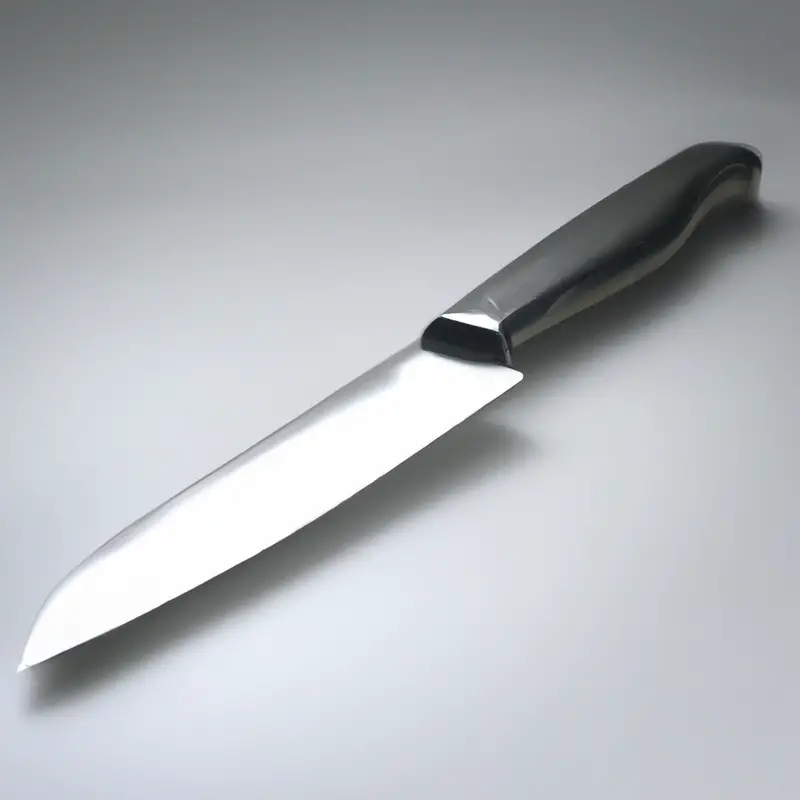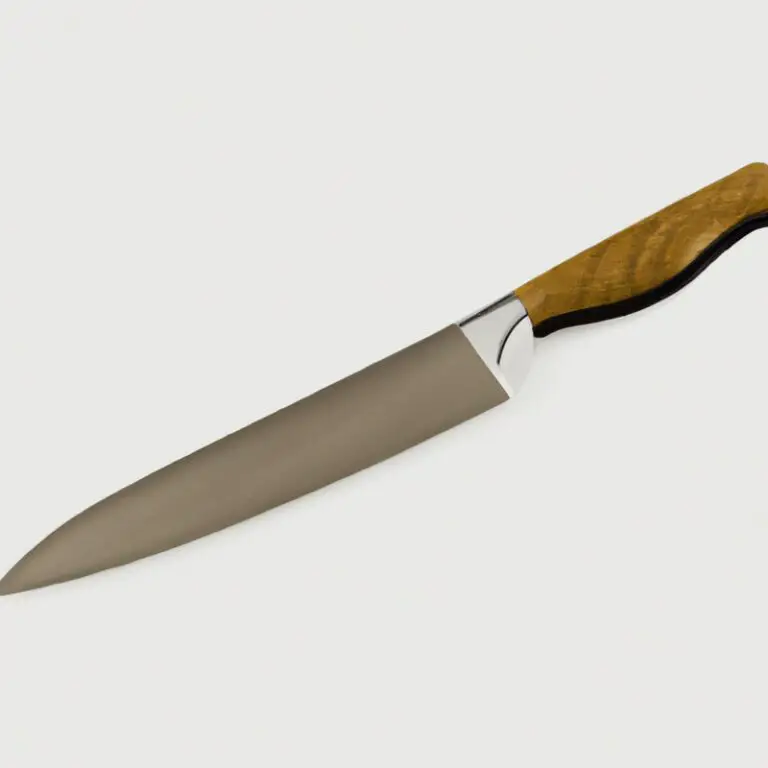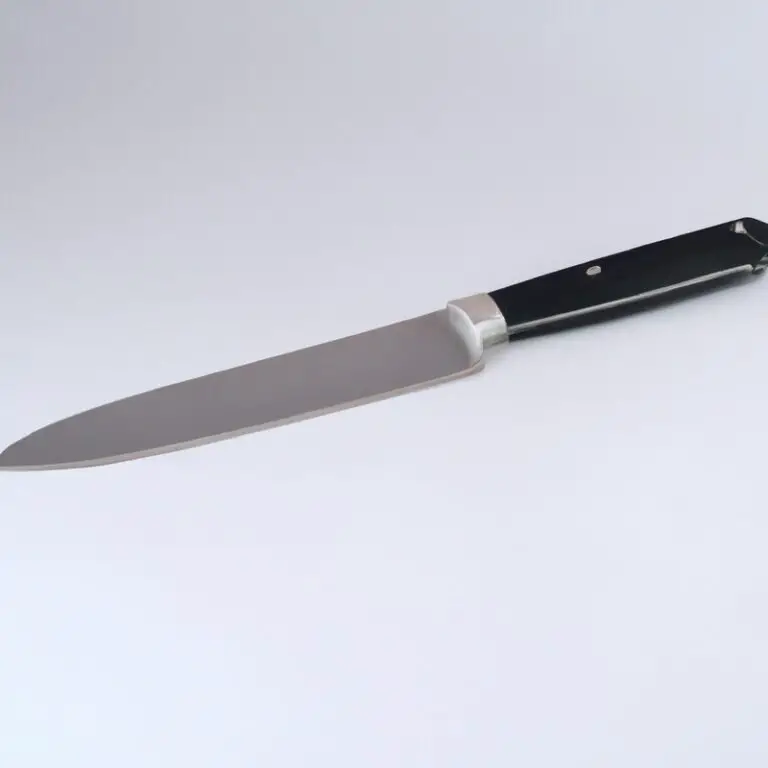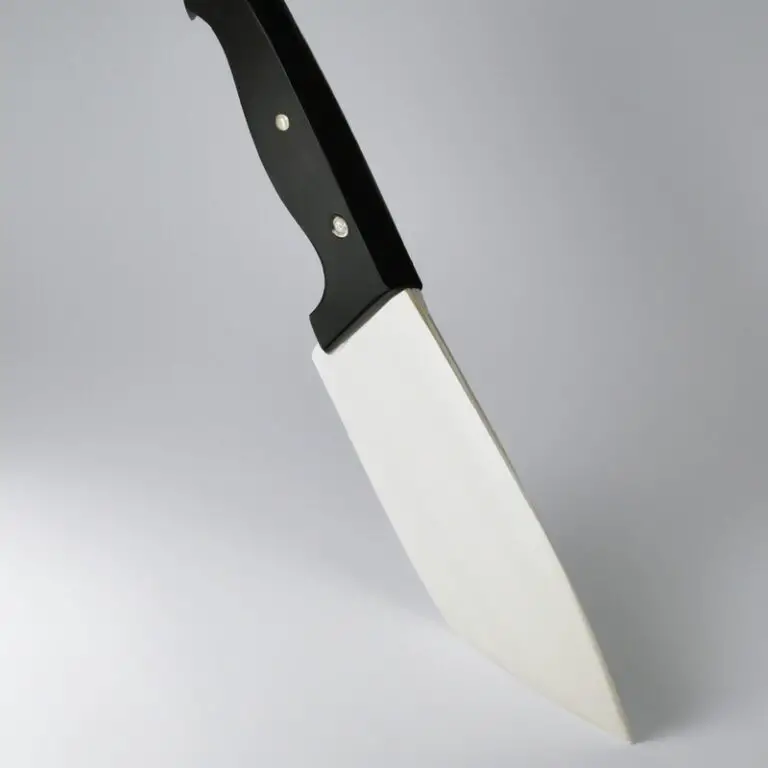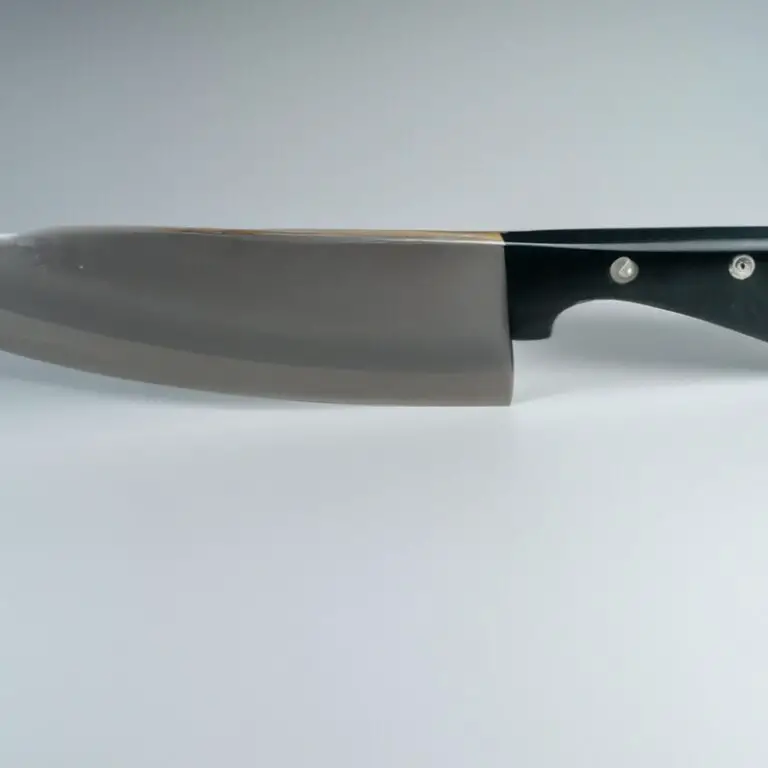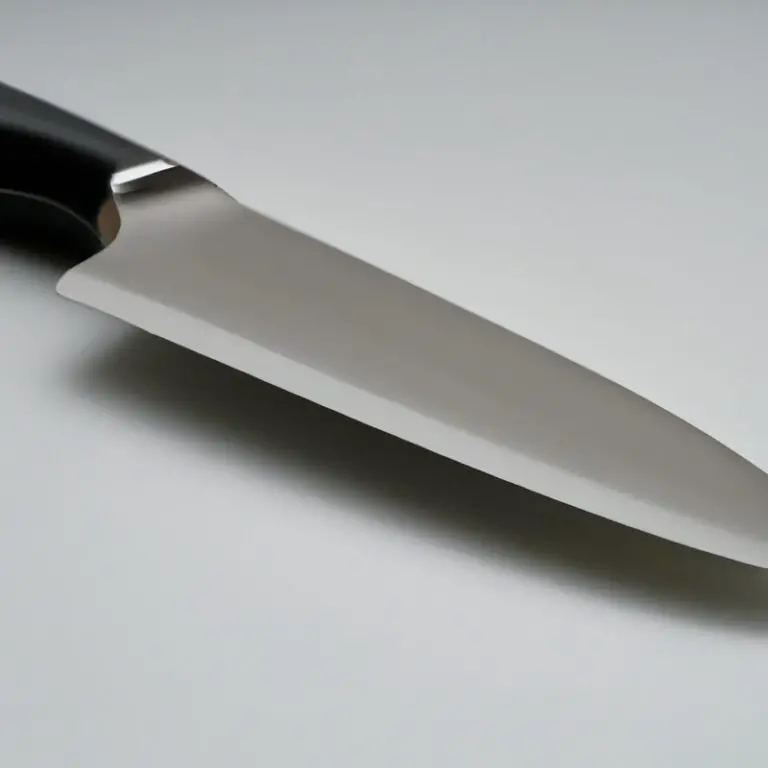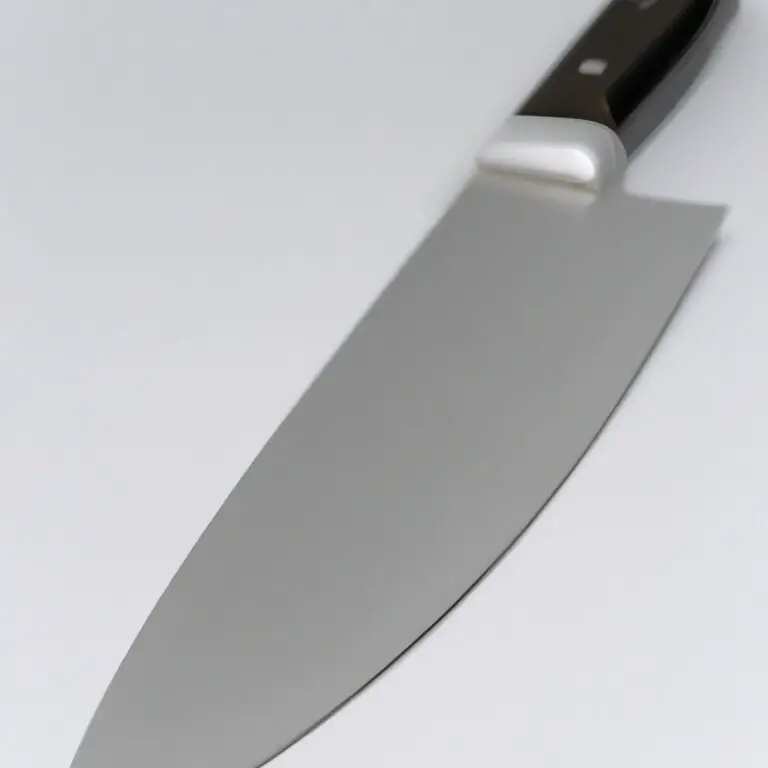How To Protect The Handle Of a Chef Knife From Moisture Damage? – Tips
Key Takeaways:
- Wipe the knife handle dry after each use to prevent water and moisture buildup.
- Apply a protective coating, such as mineral oil, to the handle to create a barrier against moisture.
- Store the knife in a dry and ventilated area to prevent humidity from damaging the handle.
- Avoid soaking the knife or leaving it in water for prolonged periods to prevent irreversible damage to the handle.
As a professional chef or a cooking enthusiast, you understand the importance of maintaining the quality and longevity of your most essential tool – the chef knife. However, have you been neglecting an area of your knife that is as important as its blade?
We’re talking about the handle, which is extremely susceptible to moisture damage.
In this article, we’ll discuss the types of handle materials and the common causes of moisture damage. We’ll also explore tried and tested DIY methods and the benefits of using a knife sheath or guard for long-term care.
Save yourself from the consequences of a damaged handle by following our guide to protect your chef knife handle from moisture damage.
| Method | Pros | Cons |
|---|---|---|
| Wipe dry after each use | Easy and quick | May forget to do it and cause damage |
| Use mineral oil | Creates a barrier around handle | Needs to be reapplied regularly |
| Use beeswax | Natural and eco-friendly | Needs to be reapplied regularly |
| Wrap in cloth or paper towel | Absorbs any moisture | May be cumbersome to wrap and store the knife |
Understanding the importance of protecting your chef knife handle from moisture damage
Protecting your chef knife handle from moisture damage is essential to keep your knife’s handle in good condition. The handle of a chef knife is made of various materials like wood, resin, plastic, and metal, all of which are susceptible to water damage.
Exposure to moisture can cause the handle to warp, crack or even develop mold.
This not only affects the overall appearance of your knife, but it can also lead to decreased performance and make it unsafe to use. Proper cleaning and drying after each use can go a long way in preventing moisture damage.
Make sure to thoroughly dry the handle and blade of your knife after cleaning to prevent water from seeping into the handle.
It is also important to store your knife in a dry place, away from humidity. Consider using a knife sheath or guard to protect the handle when storing or transporting your knife.
Neglecting to protect your chef knife handle from moisture damage can have severe consequences.
Not only will it affect the lifespan and performance of your knife, but it can also lead to the growth of harmful bacteria that can cause foodborne illnesses. Implementing proper maintenance techniques will not only extend the overall longevity of your chef knife but also ensure the safety and hygiene of your food.
Types of materials used in chef knife handles and their susceptibility to moisture damage
Chef knife handles can be made of a wide variety of materials, each with its strengths and weaknesses related to moisture resistance. Some of the most popular materials are wood, plastic, and stainless steel.
Wood handles have a natural beauty and a comfortable grip, but they are highly susceptible to moisture damage.
If not properly maintained and dried after use, wooden handles can warp, crack, and even produce mold. Plastic handles are durable and do not absorb moisture, making them resistant to damage.
However, they tend to be less comfortable to hold and may not provide the same level of balance and weight distribution as other materials.
Stainless steel handles are highly resistant to moisture damage and may offer optimal balance and weight distribution. However, they may be uncomfortable to hold for long periods, and they may become slippery if your hands are wet.
Other materials like carbon fiber, micarta, and G10 are becoming increasingly popular due to their durability and resistance to moisture damage.
However, they are often more expensive than traditional materials. Ultimately, the choice of material for your chef knife handle depends on your personal preference, budget, and level of maintenance.
It is crucial to keep your knife handle clean and dry after use to enhance its longevity and performance.
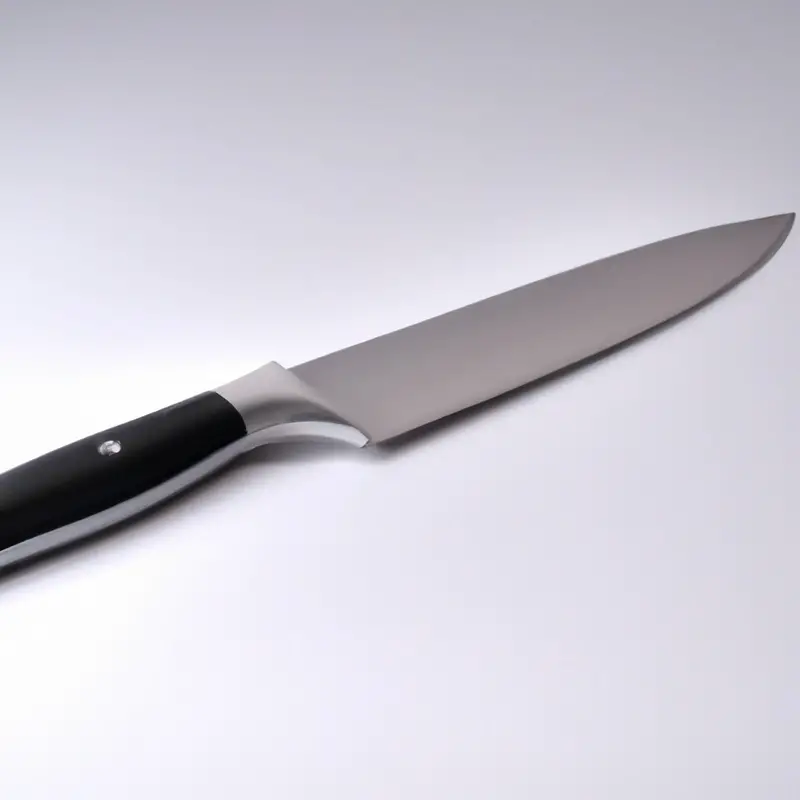
Common causes of moisture damage to chef knife handles
Common causes of moisture damage to chef knife handles include leaving the knife in water for prolonged periods, exposing the knife to humid environments, and not drying the knife thoroughly after washing. Additionally, using cleaning agents that contain harsh chemicals can cause damage to the handle.
Moreover, storing the knife in damp conditions can lead to moisture damage.
Finally, leaving a wet knife in a knife block or drawer can cause the handle to rot or crack over time. To prevent moisture damage, it’s essential to clean and dry the chef knife handle thoroughly after use and store it in a dry and safe place.
How to properly clean and dry your chef knife to prevent moisture damage
To properly clean and dry your chef knife, you should:
- Wash the blade with warm soapy water, using a non-abrasive sponge or cloth, and immediately dry it with a clean towel.
- Avoid soaking the knife in water or putting it in the dishwasher, as this can cause moisture damage to the handle.
- Dry the handle with a clean towel after every use to prevent moisture buildup.
- Store the knife in a dry place, such as a knife block or magnetic strip, and avoid storing it in a damp environment.
- Consider using a knife sheath or guard for extra protection.
Proper cleaning and storage can greatly prevent moisture damage to your chef knife handle, ensuring its longevity and performance.
Choosing the right storage method for your chef knife to prevent moisture damage to the handle
Choosing the right storage method is essential in preventing moisture damage to the handle of your chef knife. Here are some effective storage options to consider:
- Knife Block: A knife block is a great storage option as it allows the knife to air dry after use. Choose a knife block with inserts that are made of materials that absorb any remaining moisture from the blade or handle.
- Magnetic Knife Strip: A magnetic knife strip is another practical and visually appealing storage option. Ensure the magnet is strong enough to securely hold the weight of your knife.
- Knife Sheath: A knife sheath or guard can protect your knife’s handle from moisture damage and other sources of wear and tear. Ensure the sheath fits your knife’s size and shape.
- Drawer Insert: If you prefer to store your knives in a drawer, use a dedicated drawer insert to keep your knife separate from other kitchen tools and to prevent direct contact with the drawer’s base.
By selecting the right storage method for your chef knife, you can prolong the life of your knife’s handle, avoid potential rust, and protect your investment.
The benefits of using a knife sheath or guard for protecting your chef knife handle
Using a knife sheath or guard is an effective way to protect your chef knife handle from moisture damage. A sheath covers the blade and handle of your knife, preventing them from coming into contact with water or other liquids.
This barrier protects the handle from swelling, warping, or cracking, which can severely impact the knife’s performance.
It also helps to prevent bacteria and other harmful substances from building up on the handle. Moreover, a sheath or guard adds an additional layer of safety when carrying or storing your knife.
It prevents accidental cuts and nicks that can occur when the knife is not properly protected.
Furthermore, it helps to keep the knife edge sharp and prevents it from dulling quickly. When choosing a sheath or guard for your chef knife, look for one that is made from high-quality materials and specifically designed for your knife model.
It should fit snugly around the blade and handle to ensure maximum protection.
Proper maintenance of the sheath or guard is also essential to ensure that it continues to provide optimal protection. Overall, using a sheath or guard is an easy and effective way to protect your chef knife handle from moisture damage and extend its longevity.
It adds an extra layer of safety and security and helps to keep the knife edge sharp for longer.
DIY methods for protecting your chef knife handle from moisture damage
DIY methods for protecting your chef knife handle from moisture damage include:
- Applying a coat of mineral oil or bee’s wax to the handle to create a barrier against moisture.
- Using a silicone or rubber grip cover over the handle for extra protection.
- Wrapping the handle with paracord or leather to create a grip while also preventing moisture damage.
- Avoiding prolonged exposure to water and washing the knife immediately after use.
- Storing the knife in a dry, well-ventilated area, away from moisture and humidity.
Remember to regularly check your handle for any signs of damage and reapply protective coatings as needed to keep your chef knife in top condition.
How to restore a chef knife handle that has already been damaged by moisture
If your chef knife handle has already been damaged by moisture, it is possible to restore it to its original condition. Here are the steps to follow:
- Clean the handle with warm water and soap.
- Sand down any rough or damaged areas with a fine-grit sandpaper.
- Smooth out the handle with a higher-grit sandpaper.
- Apply a wood finish or protective coating to the handle to prevent further moisture damage.
- Let the handle dry completely before use.
It’s essential to note that restoring a chef knife handle damaged by moisture may not always be successful, depending on the extent of the damage. In severe cases, you may need to replace the handle or the entire knife.
It’s always best to take preventative measures to protect your chef knife handle from moisture damage in the first place.
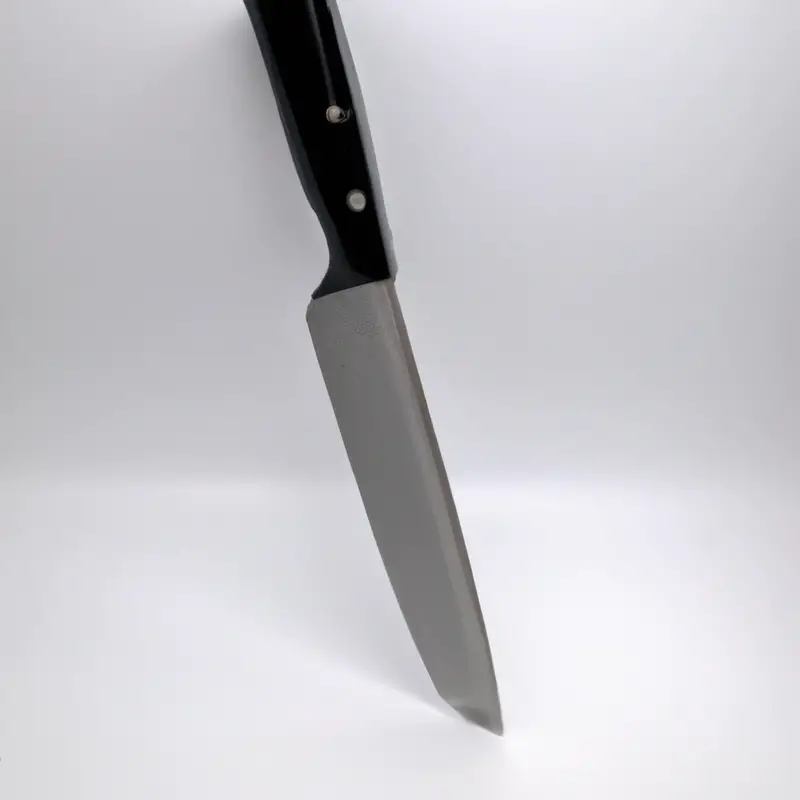
The consequences of neglecting to protect your chef knife handle from moisture damage
Neglecting to protect your chef knife handle from moisture damage can lead to several consequences that can affect the longevity and performance of your knife. The following are some of the consequences that can result from not protecting your chef knife handle from moisture damage:
- Corrosion: Exposure to moisture can cause the metal parts of your knife to corrode, which can lead to rust and weakening of the blade.
- Cracking: When the handle of your knife is exposed to moisture for extended periods, it can cause the handle to crack, which can compromise the overall stability and structural integrity of the knife.
- Bacterial growth: Moisture can create a perfect breeding ground for microorganisms such as bacteria and fungi, which can lead to contamination of your food and pose a health risk.
- Reduced performance: A handle that is damaged by moisture can cause discomfort and affect the overall performance of your knife, making it difficult to maneuver and execute precise cuts.
Neglecting to protect your chef knife handle from moisture damage can lead to several negative consequences that can affect the functionality and durability of your knife. Therefore, it is essential to take preventative measures to protect your knife’s handle from moisture damage.
Tips for maintaining the overall longevity and performance of your chef knife
Proper care and maintenance are crucial to maintain the overall longevity and performance of your chef knife. Here are some useful tips to consider:
- Hand washing: Always wash your knife by hand with warm, soapy water, and avoid putting it in the dishwasher.
- Regular sharpening: Keep your knife sharp by using a whetstone or honing rod regularly to maintain its edge.
- Proper storage: Store your knife safely in a knife block, magnetic strip, or sheath to prevent damage to the blade and handle.
- Avoid harsh chemicals: Never use harsh chemicals, bleach, or abrasive cleaners on your knife.
- Dry immediately: After washing, dry the blade and handle thoroughly to prevent any moisture damage.
- Use a cutting board: Always use a cutting board to prevent unnecessary wear and tear on the blade.
By following these simple tips, you can extend the life of your chef knife while maintaining its performance and sharpness.
Final Verdict
Protecting your chef knife handle from moisture damage should be a top priority for any serious home cook or professional chef. By understanding the various materials used in knife handles and the causes and consequences of moisture damage, you’ll be able to take proactive steps towards preventing damage and extending the lifespan of your knife.
Proper cleaning and drying techniques, storage methods, and using sheaths or guards can all help protect your knife handle.
If your handle is already damaged, there are also DIY methods and restoration techniques to consider. Remember, neglecting to protect your knife handle can result in costly and unnecessary replacement.
By implementing these tips and tricks, you’ll not only extend the longevity of your knife handle, but also maintain the overall performance and quality of your trusted kitchen companion.
So, don’t skimp on knife handle protection – your knife (and wallet) will thank you!

